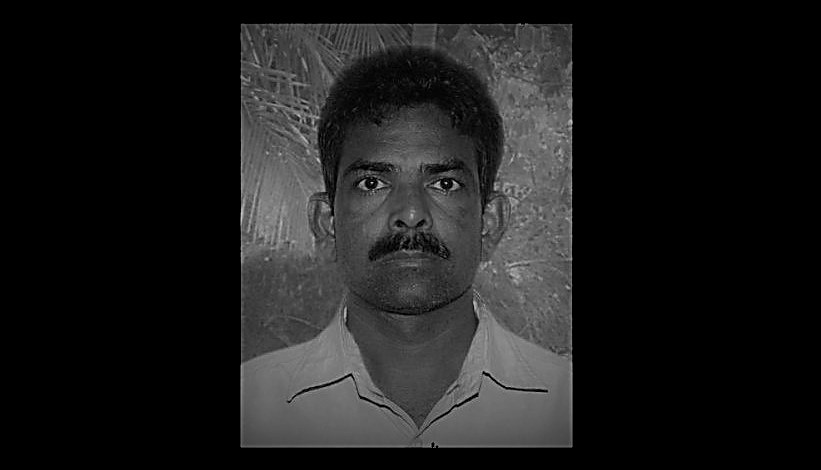Mohan Kumar: The Cyanide Murderer of Karnataka
Written By: LFG
Edited By: Grave Reviews Staff

Early Life
Mohan Kumar was born on April 6, 1963, in a remote village in Kanyana, which is in Karnataka, India. He grew up in a big family belonging to the Scheduled Caste (SC) group (which were considered poor and depressed families) as his parents were laborers who tended to farmlands owned by wealthy landowners in the area. Mohan had two brothers and a sister, and despite their unfortunate predicament, the Kumar kids were smart and did reasonably well in school. According to Mohan’s elder brother, Ramesh, he was a mild-mannered boy and didn’t talk much. Mohan also had a great relationship with his mother, especially when his father abandoned their family.
After high school, Mohan studied at Uppinangadi First Grade College, taking up a Bachelor’s of Arts degree course. He started his career as a teacher in November 1984 at Shiradi Primary School and subsequently worked in other school districts. However, he was often suspended due to poor attendance and misdeeds like fraudulent bank loans and forgery issues.
Mohan had a colorful personal life as he was married three times. His first marriage ended in divorce after refusing to convert to Christianity, while his second was an arranged marriage that resulted in two sons. His third marriage was to a woman who claimed he was a loving husband, which is why she was shocked when police came to their home to arrest her husband.
Mohan’s Early Crimes
Before he was known as “The Cyanide Man,” Mohan Kumar’s first reported crime was in 2000. He threw a young woman into the Nethravati river for allegedly refusing to marry him. Thankfully, a witness saw the incident and reported Mohan to the police. He was arrested for attempted murder but was released after posting bail. To make matters worse, he ended up losing his job in 2003 due to the criminal offense. This event proved to be the trigger for his murder spree, which began the same year.
The Birth of a Serial Killer
In 2003, Mohan began luring young women between the ages of 25 and 35, most of whom were desperate for marriage. As a modus operandi, he would promise marriage to the women and ask them to elope once they had developed feelings for him. It was an offer that was hard to resist as Mohan would say he does not need a dowry (a wife offers property/money on their marriage) to marry them which was usually custom in arranged marriages. He was careful to cover his tracks since he would use a different name for every victim, but the one thing he never changed was his supposed job of being a government officer. Mohan also led the women to believe he belonged to the same class as them just to earn their trust.
Once he secured their confidence, Mohan would usually ask to meet them in a hotel near a bus station. After spending the night together, he would ask them to take a contraceptive pill laced with cyanide, but as a precaution, he would tell the victim to take the pill inside the nearby bus station’s comfort room. Mohan would then return to the hotel to collect their things, including the victim’s jewelry and other possessions , when the women passed out and died. Subsequently, he would pawn the jewelry for money and used this to sustain his families back home.
For six years, Mohan was able to get away with his crimes as the police were not keen on investigating the deaths, despite the unusual circumstances. All post-mortem findings led to cyanide poisoning, which is why it was often reported that these deaths were suicide.
Mohan would always instruct his victims to keep the relationship a secret from their families. This is the main reason why the relatives never knew why the young girls would suddenly disappear and never return.
The Arrest and Trial
The police were forced to investigate the death behind a certain Anitha Mulya, a 22 year old woman from Banwal, who turned out to be Mohan’s 19th victim. Her family threatened violence against the police if they did not investigate the matter. As a result, a rapid search began to appease the family.
Anitha was reported missing on June 17, 2009, and her family feared she ran away with a Muslim man. Everyone was shocked when her corpse was found 160 kilometers (roughly 99 miles) away from her hometown, inside a ladies’ room in a nearby bus station in Hassan. The police probed Anitha’s phone records, and they found she regularly communicated with an unknown number. The number was owned by a woman named Kaveri Manku, who was also reported missing in Madikeri. Upon further investigation, the police traced a recurring pattern of old phone numbers connected to missing women throughout different districts. A call was traced to a boy named Dhanush, who was using an old phone gifted by his uncle, Mohan Kumar.
The police did an entrapment operation by having Mohan’s current phone pal, Sumithra Pujari, invite him to meet up. He was immediately arrested and sent to the precinct for interrogation. The authorities were appalled when Mohan admitted to killing 20 women in six towns in five districts throughout Karnataka. However, he denied the allegations a few days later and proclaimed his innocence.
The murder spree caused a media frenzy, earning him the nickname “Cyanide Mohan” because of how he killed his victims. Mohan’s case was taken to the Mysore Fast Track Court, and on June 24, 2020, he was finally convicted for the murder of his twentieth victim. Mohan Kumar currently awaits sentencing for his death penalty.
What do you think about Mohan Kumar: The Cyanide Murderer of Karnataka? Comment below.

Join the Conversation